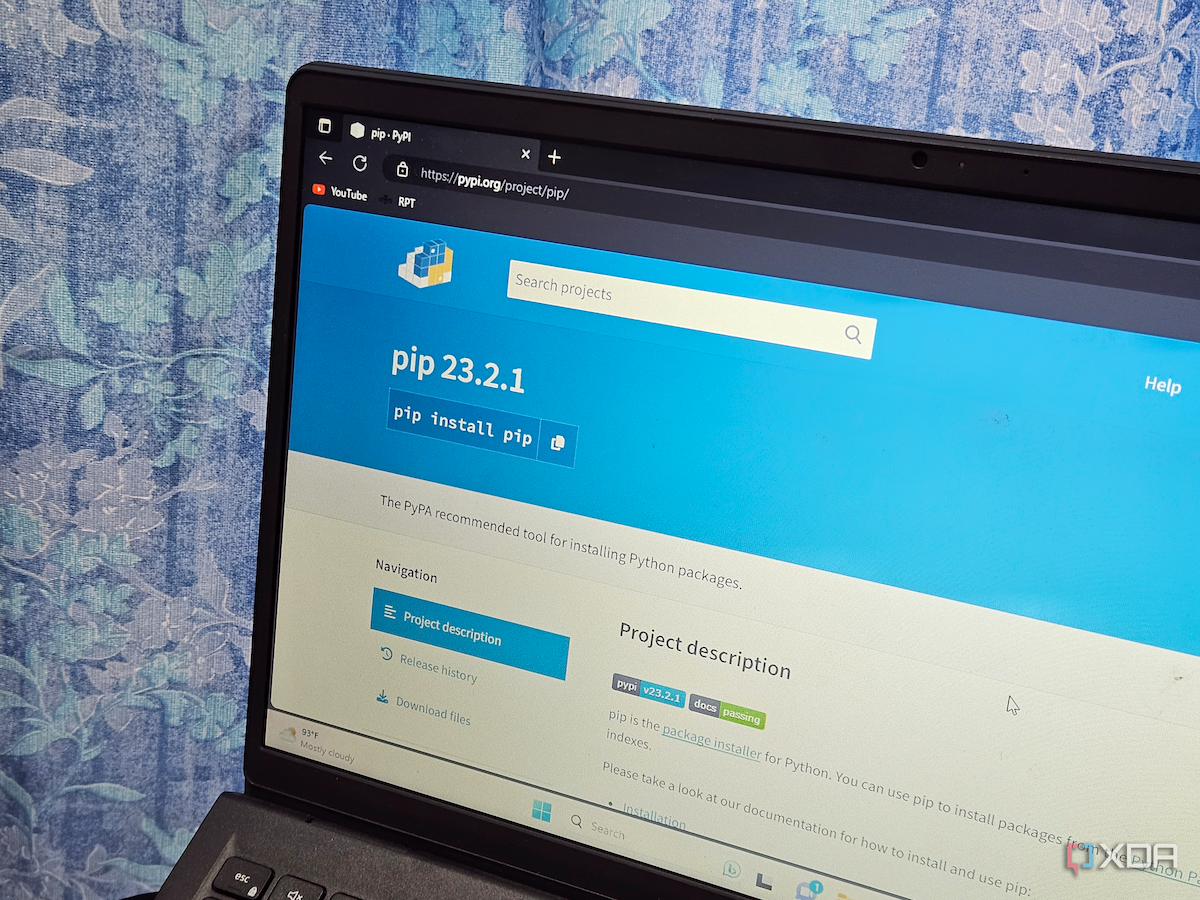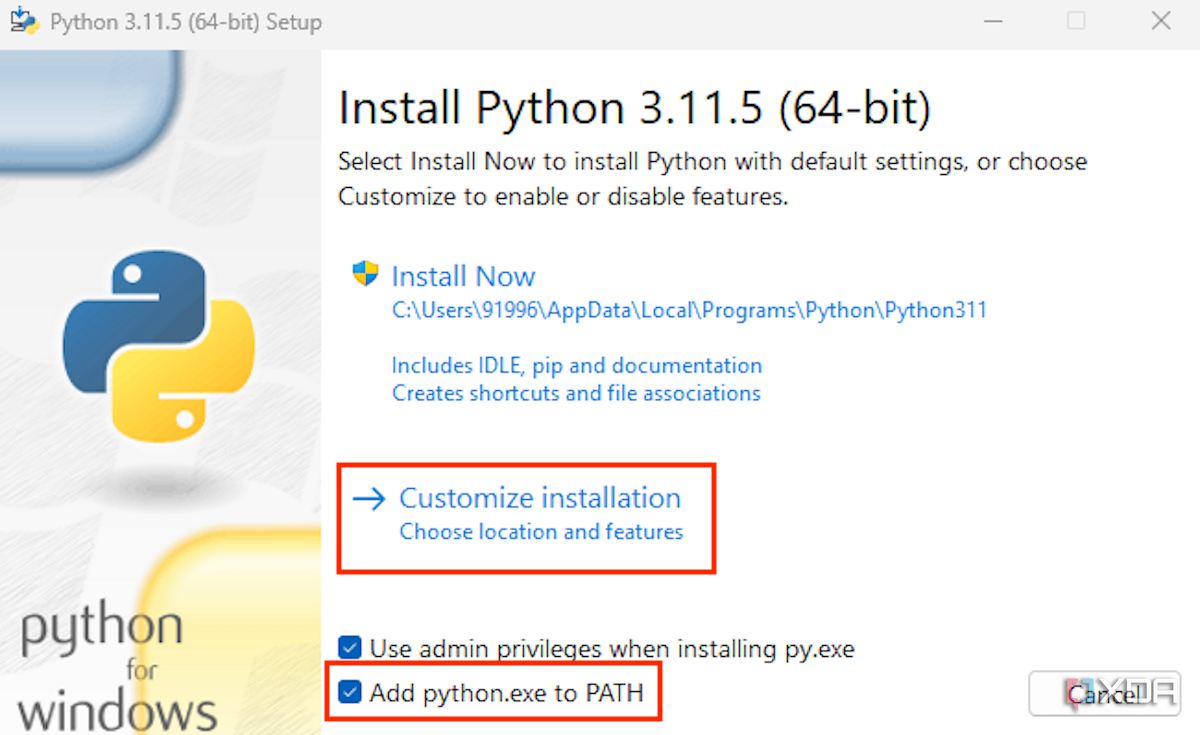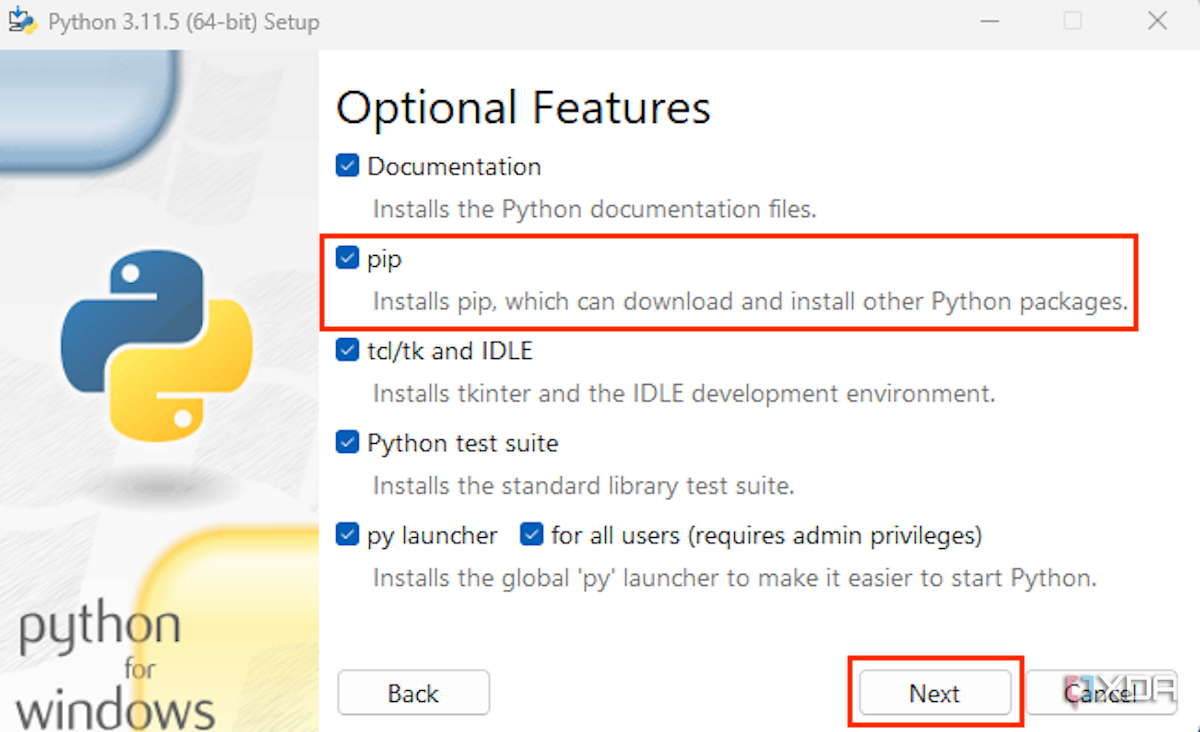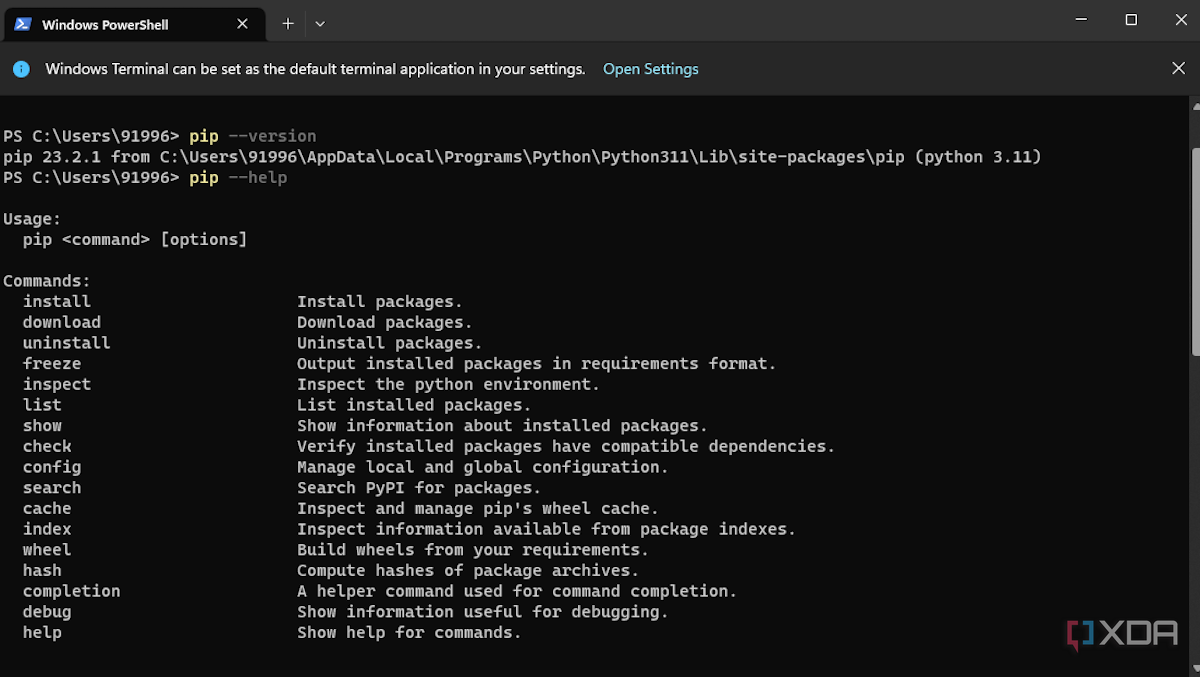Quick Links
Pip is one of the most important tools to have at your disposal when you're getting started with a Python project. It allows you to install and manage millions of Python packages and libraries to help you set up the right software environment for a project, be it a simple automation task or a complex artificial intelligence or machine learning project. But how do you install Pip on Windows to ensure you have no issues working on Python projects? Thankfully, installing Pip on Windows is a fairly simple task, and you can do it following a few simple steps. There's also a chance that you may already have Pip installed on your system, so read on to learn more about it.
What is Pip?
Pip is a package installer for Python that is used to download and manage Python packages and libraries from repositories such as the Python Package Index (PyPI). You can also use Pip to search, upgrade, or uninstall packages, and it can even help you install non-Python packages indirectly, using things like a Python wrapper package. It's easily among the most useful tools you can have in your environment as a Python developer or user.
That being said, there's a good chance you already have Pip on your system, and there's no need to install it separately. That's right, if your version of Python2 is 2.7.9 (or greater) or Python3 is 3.4 (or greater), then you already have Pip installed on your system. It's enabled as a part of the default installation package unless you voluntarily unchecked the box to install pip during setup.
How to check if Pip is already installed on Windows
Pip, as we already mentioned, is automatically installed if you are using one of the latest versions of Python from python.org. Luckily, you don't have to play the guessing game to figure out whether you have Pip installed on your system. Instead, follow the steps highlighted below to check:
- Open Command Prompt or Windows Terminal.
- Enter either of the following commands, depending on whether you are using Python 2.7 or Python 3.x respectively:
pip --versionpip3 --version
If you see a Pip version as your result, then you are already set, and you don't have to install Pip
But if you see some error saying something along the lines of "Pip is not recognized as an internal or external command," then you may be on an older version of Python without Pip. Try the following:
python3 -m pip --version
If that doesn't work, then you should follow the instructions below.
Installing Pip on Windows
There are several ways to install Pip on Windows, but the best — and also the easiest — way to do it is by installing Python or upgrading to its latest version. Here's how to do it:
Python 2 reached its end of life on 1 January 2020 and is no longer supported. Hence, it's recommended that you upgrade to Python 3, which comes with Pip by default.
- Download the latest version of Python from python.org or by clicking the button below. Download Python
- Simply download the binary and execute it to install Python.
- Enable the Add python.exe to PATH checkbox.
- Select Customize installation to ensure pip is enabled as an optional feature, and hit Next and proceed with the installation.2 Images
And that's it; you've now installed Python along with Pip successfully on your Windows PC.
How to verify Pip installation on Windows
Installing Pip on Windows, as you can see, is fairly straightforward, and it's hard to go wrong. But if you want to ensure nothing went wrong, and you're all set for your Python projects, then follow the steps below to verify Pip installation on Windows:
- Open Windows Terminal or Command Prompt, and run one or both commands without quotes to verify.
"pip --version" or "pip --help""pip3 --version" or "pip3 --help"
The first command should return the version of Pip installed on your Windows PC, whereas the second one will throw a list of commands that Pip can take as an argument. Either way, if you see a valid result and not an error like we originally did, then you've successfully installed and verified Pip on your Windows PC.
Installing Pip on Windows: Final thoughts
You don't have to worry about installing Pip separately as a new user, as the latest versions of Python sideloads Pip on your system automatically. Those on a relatively older version of Python who may or may not have Python enabled on their system are advised to get on the Python 3 environment, in which case you don't have to install pip separately. If you're unsure of the Python version installed on your system and are wondering whether you need to install pip, then you can use the verification command to ensure you're not running a fool's errand. With that out of the way, you are now on your way to start programming your Python projects.
If you're new to the world of Python developments, then I suggest checking out courses and online tutorials to get your pulse on the Python language. It's always good to cover the basics before you jump into bigger projects involving complex tools and libraries. I also recommend upgrading to one of the best laptops out there once you're ready to develop projects involving machine learning and artificial intelligence.





